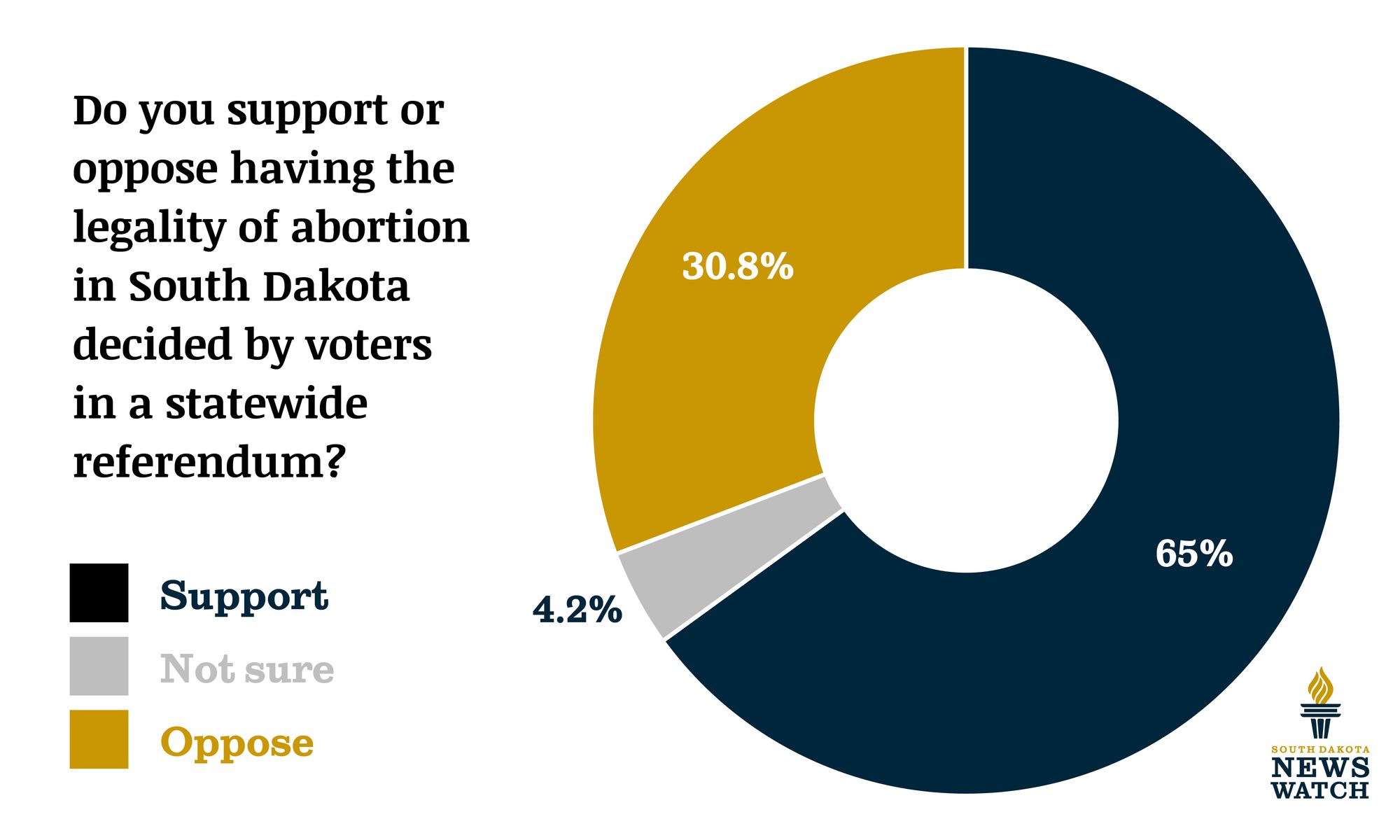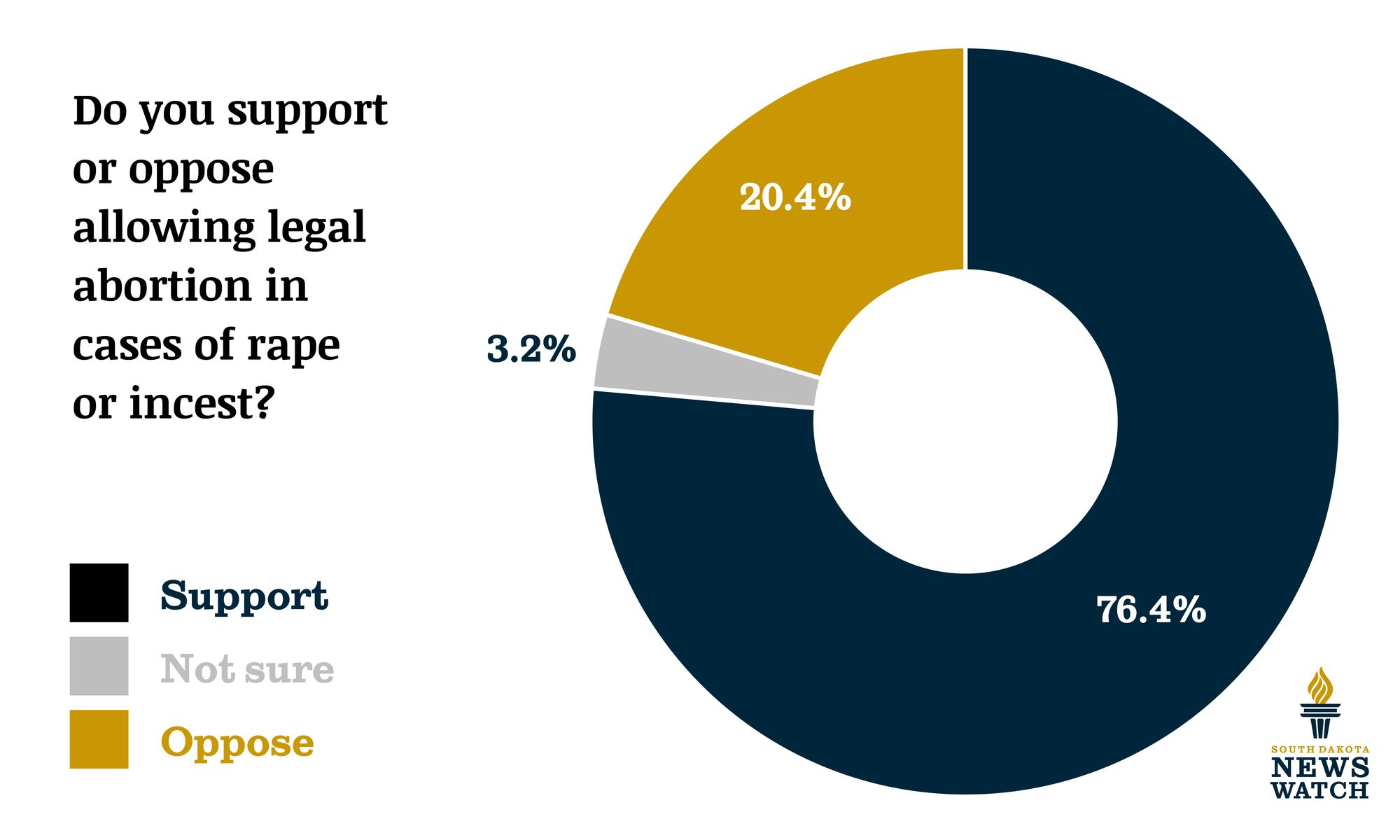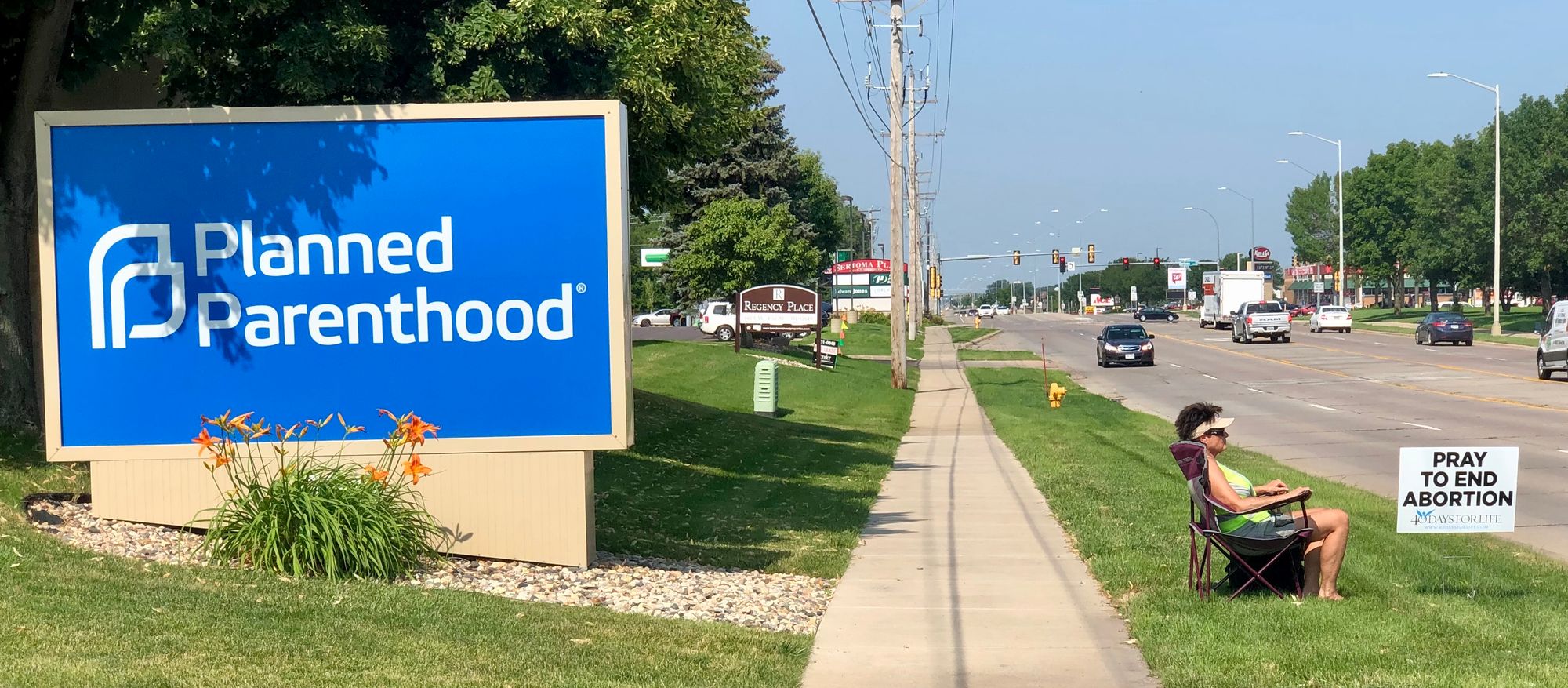Editor’s note: This is the third in a series of South Dakota News Watch stories providing analysis of potential South Dakota ballot initiatives for the 2024 election.
It’s no coincidence that South Dakotans are well-versed in direct democracy. The state was the first in the nation to adopt an initiative and referendum process in 1898, giving citizens the power to propose and approve laws under which they live.
Petition-fueled constitutional amendments were added in 1972, a more weighty process that some conservative legislators view as a political “end around” for progressive causes in a state where Republicans control the executive and legislative branches.
While initiated measures can be repealed by the state Legislature or referred to the ballot for reconsideration, initiated amendments are entrenched in the state constitution and can only be reversed through court challenges or a superseding amendment.
More from SD News Watch: Abortion measure tangled up in fight over petition location
The stakes are high, in other words, especially on an issue such as abortion, a complex and ongoing legal and moral debate with deep political divisions in South Dakota.
Dakotans for Health, a grassroots organization that pushes for progressive policy change through petition efforts, is collecting signatures for a proposed 2024 amendment that would enshrine abortion rights in the South Dakota Constitution.
If passed by voters, it would supersede a 2005 state trigger law enacted last summer when the U.S. Supreme Court overturned Roe v. Wade with its ruling in Dobbs vs. Jackson’s Women’s Health Organization, leaving it up to the states to determine reproductive rights.
The South Dakota trigger law makes it a Class 6 felony for anyone “who administers to any pregnant female or prescribes or procures for any pregnant female” a means for an abortion, except to save the life of the mother.

More from SD News Watch: Behind the Ballot
- Abortion measure tangled up in fight over petition location
- Noem pulls support for grocery tax measure over jeopardized tobacco money
- Ballot effort would allow more South Dakotans to choose candidates. But can it pass?
Dakotans for Health founder Rick Weiland thinks the time is right for an abortion amendment because of the unsettled nature of South Dakota’s ban. Women now cross the border into neighboring states to obtain abortion pills. And questions remain about the legal interpretation of “life of the mother” in state law.
“With Roe v. Wade, at least there was a framework that provided some reasonable guardrails on both sides of the issue,” Weiland said. “It’s like the wild, wild West right now.”

News Watch poll showed support for referendum on abortion
The petition drive has galvanized an equally passionate opposition movement, with anti-abortion groups wary of allowing the issue to reach the ballot. South Dakotans rejected near-total abortion bans by statewide vote in 2006 and 2008.
A News Watch-sponsored poll of 500 registered voters in July 2022 by Mason-Dixon Polling & Strategy showed that a majority (57%) of respondents support allowing legal access to abortion medications in the state.
Nearly two-thirds (65%) said they support having a statewide referendum to determine South Dakota’s laws regarding reproductive rights.
More than three-fourths (76%) of those polled support allowing legal abortion in cases of rape and incest, an exception not currently allowed under South Dakota law.

That public support of abortion rights with restrictions is reflected in other GOP-controlled states.
In Kansas, which former President Donald Trump won with 56% of the vote in 2020, voters overwhelmingly rejected a 2022 constitutional amendment that would have allowed the Republican-led Legislature to tighten restrictions or ban abortion outright, with 59% voting against the amendment.
Is abortion amendment ‘far more extreme’ than Roe v. Wade?
In South Dakota, the abortion measure’s most public opponent is state Rep. Jon Hansen, a Republican from Dell Rapids.
He serves as vice president of South Dakota Right to Life and co-chair of the Sioux Falls-based Life Defense Fund, which has the stated goal of fighting against “this deadly constitutional amendment at every step.”
Hansen has encouraged volunteers to stand next to Dakotans for Health petition circulators and “explain to the public how radical this amendment is and encourage our fellow citizens not to sign the petition.”
Hansen, a lawyer, has also criticized the wording of the proposed amendment, claiming that it’s “far more extreme than Roe v. Wade itself.”

Weiland and others pushed back on that statement by claiming that the amendment uses the same trimester framework as Roe, the landmark 1973 ruling in which the Supreme Court held that the Constitution protected a woman’s right to an abortion prior to the viability of the fetus.
The proposed South Dakota ballot amendment prevents the state from regulating “the abortion decision and its effectuation” during the first trimester (1 to 13 weeks). During the second trimester (14 to 26 weeks), the state could regulate “the abortion decision and its effectuation only in ways that are reasonably related to the physical health of the pregnant woman.” After the end of the second trimester (when the fetus becomes viable), abortion could be regulated or prohibited except to preserve “the life or health” of the mother.
Hansen, who sent a statement to News Watch via email but didn’t agree to an interview, did not respond directly when asked what specific elements of the amendment are more extreme than Roe v. Wade.

Restrictions added after Supreme Court’s Casey ruling
In public statements, Hansen pointed to a lack of “safety protections” such as parental notification, waiting periods and informed consent.
In South Dakota, before Dobbs, informed consent meant that doctors were required to tell patients that women who undergo abortion procedures could experience depression and suicidal thoughts and that the procedure would “terminate the life of a whole, separate, unique, living human being.”
These state restrictions were not permissible under Roe v. Wade.
They were passed after Planned Parenthood v. Casey, a 1992 Supreme Court ruling that upheld the basic tenets of Roe but overturned the trimester framework and used a more flexible standard as to whether state-imposed restrictions were constitutional.
Based on this, supporters can be taken literally when they say the proposed abortion amendment is an attempt to codify Roe v. Wade, according to Hannah Haksgaard, a professor at the University of South Dakota Knudson School of Law
“The proposed amendment is very closely aligned with the original Roe v. Wade framework,” Haksgaard told News Watch. “The language mimics the trimester framework of Roe v. Wade and nothing in this amendment indicates any abortion rights more extreme than that.”
Dakotans for Health does not dispute the assertion that the proposed amendment allows greater abortion access than existed under post-Casey laws in many states, including South Dakota.
Should mental health be part of abortion ban exception?

Hansen also contends that the amendment, if passed, would allow abortions “up to nine months” because of the measure’s language. After the second trimester, the state would be permitted to regulate or prohibit abortion “except when abortion is necessary, in the medical judgment of the woman’s physician, to preserve the life or health of the pregnant woman.”
Hansen notes that the phrase “or health” could include mental health, “however severe or however mild,” and that “preserve” means to keep something as it is.
“So the abortion amendment isn’t even about abortion to relieve existing mental health issues,” he wrote on Twitter. “The abortion amendment legalizes late-term abortion up to the point of birth if the stated reason is to avoid stress, anxiety, or adjustment issues, however mild, even before these issues ever occur.”
Mental health conditions account for more than 20% of pregnancy-related deaths in the United States, according to data from Maternal Mortality Review Committees and reported by the Centers for Disease Control and Prevention (CDC).
The criteria for mental health included suicide and overdose/poisoning related to substance abuse.
CDC: 1% of abortions in 2020 happened after 21 weeks
Most states with health exceptions limit those exceptions to physical health concerns such as “serious risk of substantial and irreversible impairment of a major bodily function” (Arizona, Florida, Ohio, Wyoming, Indiana) or risk of “serious, permanent impairment of a life-sustaining organ” (Kentucky and Louisiana).
No such declaration exists with the proposed amendment in South Dakota, keeping in line with the original Roe wording, which Hansen sees as a weakness of the proposal.
“We cannot allow abortion through nine months of pregnancy to be written into our state’s founding document,” he said in a video on the Life Defense Fund website. “The results would be completely devastating to life in our state.”

Fewer than 1% of U.S. abortions in 2020 took place at 21 weeks or later, according to CDC abortion surveillance data, compared with 93.1% up to 13 weeks and 5.8% at 14-20 weeks.
Medication abortion, through the use of pills, currently accounts for 54% of abortions in the United States, according to the Guttmacher Institute, a reproductive health organization.
Legislature declined to moderate South Dakota trigger law
Under current South Dakota law, abortion is banned “unless there is appropriate and reasonable medical judgment that performance of an abortion is necessary to preserve the life of the pregnant female.”

The legal uncertainty surrounding the wording of that exception, and possible fallout for doctors and patients, became an issue during the 2023 legislative session.
A bill sponsored by Rep. Taylor Rehfeldt, a Sioux Falls Republican and certified registered nurse anesthetist, would have defined “preserving the life of the pregnant female” as meaning “at serious risk of death” or in danger of “substantial and irreversible physical impairment of one or more major bodily functions.”
Rehfeldt, who declined an interview request, tabled her own bill in committee after facing backlash from anti-abortion factions of the Republican caucus.
“I would have never thought that the idea of preserving the life of the mother would be debatable,” Rehfeldt said during a February hearing, “or even considered not pro-life by some who would think that being pro-life could mean that we do not protect women, that we are not willing to provide clarification for doctors who have given their lives to care for not just one but two patients.”
Weiland calls the “abortion through nine months” warning a scare tactic not based on reality.
Weiland: Legislature could take up the issue in 2024
Weiland said the failure to advance that bill points to the “zero tolerance” approach by Hansen and other state GOP leaders.
Hansen has criticized leaving “life or health” abortion decisions up to medical professionals because the physician will “likely … be an abortionist like those from Planned Parenthood, whose business and profits are derived from performing abortions.”
Planned Parenthood didn’t respond to an interview request for this story.
The South Dakota State Medical Association doesn’t comment on citizen initiatives until they qualify for the ballot. But the association stated after the Dobbs decision that “our position remains that an abortion is a personal health and medical decision to be made by a qualified physician and patient.”
Weiland referred to Hansen’s hardline stance as out of touch with voters and post-Dobbs scenarios in South Dakota.
He raised the possibility that there will be another attempt to “soften” the state’s trigger law during the 2024 legislative session in anticipation of the proposed amendment making the ballot in November of that year.
“The question is whether there’s enough support within the Republican caucus in Pierre to moderate the law. And I would submit that the answer is no,” Weiland said.
SD voters have twice rejected near-total abortion bans
Dakotans for Health needs to collect a minimum of 35,017 signatures by May 7, 2024, to place the abortion amendment on the ballot. The goal is to submit 60,000 or more to ensure that ballot access isn’t foiled by invalidated signatures or other technicalities.
If the group makes the ballot, which Weiland expects to do, it wouldn’t be the first time South Dakotans have gone to the polls to determine state abortion laws.
In 2006, legislators passed a law to ban all abortions except those done to save the life of a pregnant woman. Then-Gov. Mike Rounds signed it, but opponents gathered enough signatures to refer it to the ballot, where it was defeated with more than 55% percent of the vote.
Two years later, voters rejected by a margin of 55% to 45% a ballot initiative that would have banned all abortions in the state except in cases of rape or incest or “to preserve the health or life of the woman.”
Battle between direct and representative democracy
Since the Dobbs decision threw the abortion question back to the states, a new battleground exists between representative democracy, with red state legislatures looking to ban or restrict abortion, and direct democracy, with pro-choice groups sponsoring petition drives to expand abortion rights in the 26 states that have initiative processes.

The fact that constitutional amendments passed by voters supersede state statutes in most cases has sparked efforts by some Republicans to raise the threshold for petitions needed to make the ballot or percentage of votes required to pass.
When it became clear that Medicaid expansion would be on the South Dakota ballot in 2022, Hansen joined a group of Republicans who tried to orchestrate a preemptive strike with Amendment C. It would have required a 60% vote for ballot measures that raise taxes or spend $10 million in general funds in their first five years.
The fact that 67% of voters rejected Amendment C on a GOP-friendly June primary ballot was viewed as a message from South Dakota voters to stay away from the state’s first-in-the-nation initiative process.
“Just when you think voters aren’t paying attention, they surprise you,” said Weiland, who saw Medicaid expansion later pass with 56% support. “I have to admit I was somewhat surprised that (Amendment C) went down in such a blaze of glory.”
Red state legislatures attempt to curtail ‘direct democracy’
Voters in Ohio face a similar decision in an August 2023 special election after Republicans passed a resolution to raise the voting threshold for constitutional amendments from a simple majority to 60% in response to abortion-related initiatives. The measure would also double the number of counties where signatures must be collected.
In North Dakota, the Legislature placed a constitutional amendment on the 2024 ballot to add restrictions to the ballot measure process, including a single-subject rule, which South Dakota adopted in 2018. It would increase the signature threshold and require constitutional amendment initiatives to be approved in both a primary and general election.
Republican-led efforts to raise the voting threshold for constitutional amendments fell short in Missouri, Oklahoma, Idaho and Florida during the 2023 legislative sessions. In Florida, initiated amendments already require 60% support to pass, and the failed bill would have raised that threshold to two-thirds.
In Missouri, where Republicans tried and failed to raise the threshold from a simple majority to 57%, state GOP leaders warned that if the threshold was not raised, an effort to allow abortions will be approved by voters.
That concern is shared by some Republican legislators in South Dakota, where attempts to restrict the state’s initiative process have largely been unsuccessful, whether at the ballot or in the courtroom.
“I don’t know why it should be so scary,” said Weiland of the direct democracy tradition. “If you believe in democracy, if you believe in majority rule, why would you be throwing up roadblocks to prevent people from circulating a petition to let the people decide at the ballot box? I mean, that’s America, right?”





